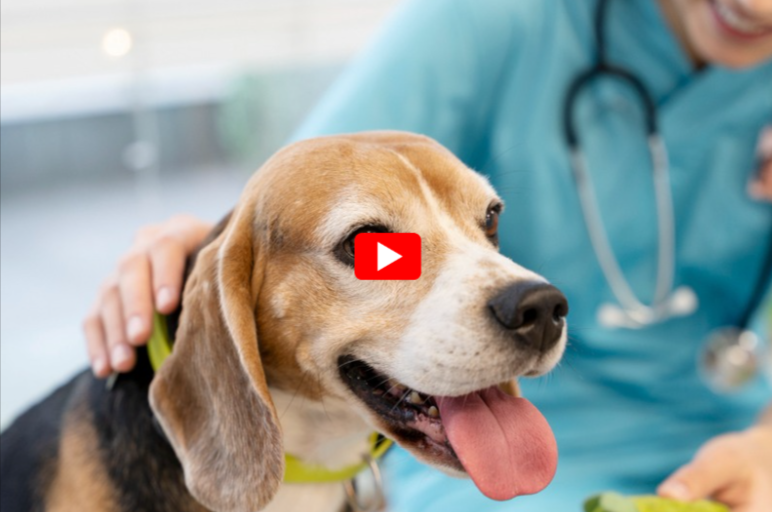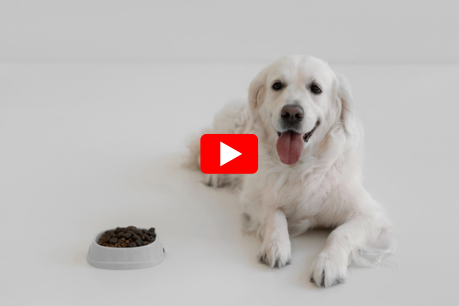Cushing Disease Dog Behavior: Behavior Changes & Care Tips
When it comes to our four-legged companions, changes in their behavior often speak louder than words. One such condition that causes noticeable shifts in canine demeanor is Cushing’s disease.
Known medically as hyperadrenocorticism, this endocrine disorder can profoundly affect a dog’s physical health and mental well-being.
Cushing’s disease in dogs can cause increased thirst, appetite, restlessness, panting, and behavioral changes like irritability or anxiety.
In this comprehensive guide, we’ll explore Cushing disease dog behavior, how it manifests, its underlying causes, diagnosis, and ways to manage it — ensuring your dog lives comfortably and happily.
What Is Cushing’s Disease in Dogs?
Cushing’s disease occurs when a dog’s body produces an excessive amount of cortisol, a stress hormone that plays vital roles in metabolism, immune response, and stress management.
While cortisol is necessary in balanced amounts, chronic overproduction can disrupt numerous bodily functions and lead to concerning behavioral changes.
Cushing’s disease in dogs typically affects middle-aged to older dogs (usually over 7 years) but can occasionally appear in younger dogs.
Common Physical Symptoms of Cushing’s Disease in Dogs
While our focus is on behavioral changes, it’s essential to recognize physical signs since they often accompany or even precede behavioral shifts:
-
Increased thirst (polydipsia)
-
Frequent urination (polyuria)
-
Increased appetite (polyphagia)
-
Hair loss (alopecia)
-
Pot-bellied appearance
-
Muscle weakness
-
Skin thinning and darkening
-
Panting and breathing issues
-
Susceptibility to infections
Cushing Disease Dog Behavior: What to Watch For
Dogs with Cushing’s disease often display noticeable changes in mood, temperament, and daily habits. Let’s break down the most common behavioral signs:
Increased Restlessness
Many dog owners notice their previously calm pet pacing or being unable to settle. Restlessness may manifest as nighttime wandering, excessive movement, or difficulty finding a comfortable spot.
Heightened Anxiety
Elevated cortisol levels can lead to increased anxiety or nervousness. Dogs may become more sensitive to noises, strangers, or changes in their environment.
Aggression or Irritability
Some dogs with Cushing’s disease develop irritability or display aggression, even toward familiar people or pets. This behavior can be unpredictable and uncharacteristic.
Excessive Panting
Beyond a physical symptom, frequent panting can be a stress behavior in dogs. It often accompanies feelings of discomfort or agitation.
House Soiling
Previously house-trained dogs may start having accidents indoors due to increased urination and possible confusion or disorientation.
Loss of Interest in Activities
Dogs that once loved walks, playtime, or cuddling may withdraw and show reduced enthusiasm. This apathy can resemble canine depression.
Compulsive Behaviors
Behaviors like excessive licking, chewing, or pacing may surface as a coping mechanism for internal stress.
Sleep Pattern Disturbances
Dogs may struggle to sleep through the night, waking frequently or pacing, leading to noticeable changes in their energy levels during the day.
How Behavioral Changes Impact Daily Life
These behavioral shifts not only affect the dog but also strain the pet-parent bond. Restlessness and nighttime waking can disturb household routines.
Increased aggression or house soiling may cause frustration and concern. Recognizing these changes as symptoms of a medical condition, not intentional misbehavior, is crucial for maintaining empathy and patience.
Diagnosing Cushing’s Disease in Dogs
If you notice behavioral changes paired with physical symptoms, a veterinary evaluation is essential. The diagnostic process typically includes:
-
Physical examination
-
Complete blood count (CBC) and biochemistry panel
-
Urinalysis
-
ACTH stimulation test
-
Low-dose dexamethasone suppression test (LDDS)
-
Abdominal ultrasound (to evaluate adrenal glands)
-
MRI or CT scan (in complex cases)
Early diagnosis ensures appropriate care and improves prognosis.
Treatment Options for Cushing’s Disease in Dogs
Treatment depends on the type and severity of the disease:
-
Medications (to regulate cortisol production)
-
Surgical removal of adrenal tumors (if applicable)
-
Radiation therapy for pituitary tumors
-
Lifestyle and diet adjustments
-
Monitoring and routine vet checkups
These interventions aim to balance cortisol levels and alleviate both physical and behavioral symptoms.
Caring for a Dog with Cushing’s Disease: Home Management Tips
Besides medical treatment, there’s a lot pet owners can do at home to support dogs coping with Cushing’s disease:
Consistent Routine
Dogs with Cushing’s may feel more secure with a predictable daily routine for meals, walks, and playtime.
Quiet Environment
Minimize loud noises, sudden changes, or stressful situations to help ease anxiety.
Comfortable Sleeping Area
Ensure your dog has a cozy, easily accessible bed in a quiet area of the home.
Encourage Gentle Exercise
Low-impact activities like short walks or supervised play in a safe yard help maintain muscle tone without overexertion.
Monitor Hydration and Bathroom Needs
Due to increased thirst and urination, offer ample water and allow frequent outdoor breaks.
Positive Reinforcement
Use calm, positive reinforcement to encourage desired behaviors without punishment, which could exacerbate anxiety.
When to Consult Your Veterinarian
If you notice any of the following signs, schedule a veterinary visit immediately:
-
Sudden increase in aggression
-
Severe restlessness or inability to sleep
-
Repeated house soiling despite regular breaks
-
Rapid physical deterioration
-
Sudden changes in appetite or thirst
Prompt intervention improves outcomes and quality of life.
How to Support Yourself as a Pet Parent
Caring for a dog with Cushing’s disease can be emotionally and physically demanding. It’s essential to:
-
Educate yourself about the condition
-
Set realistic expectations
-
Seek support from veterinary professionals, trainers, or online communities
-
Take breaks and practice self-care
Remember, your dog’s behavior is a response to a medical condition, not a personal failure or lack of training.
Final Thoughts
Cushing’s disease in dogs is a complex and often misunderstood condition. While it significantly affects physical health, the accompanying behavioral changes can be equally challenging for both dogs and their families.
Early recognition of symptoms, compassionate care, and appropriate medical management can vastly improve a dog’s quality of life.
By understanding Cushing disease dog behavior and responding with patience and empathy, pet parents can ensure their beloved companions remain as happy and comfortable as possible during their journey with this condition.
References Link
-
PetMD – Cushing’s Disease in Dogs: https://www.petmd.com/dog/conditions/endocrine/c_dg_hyperadrenocorticism



